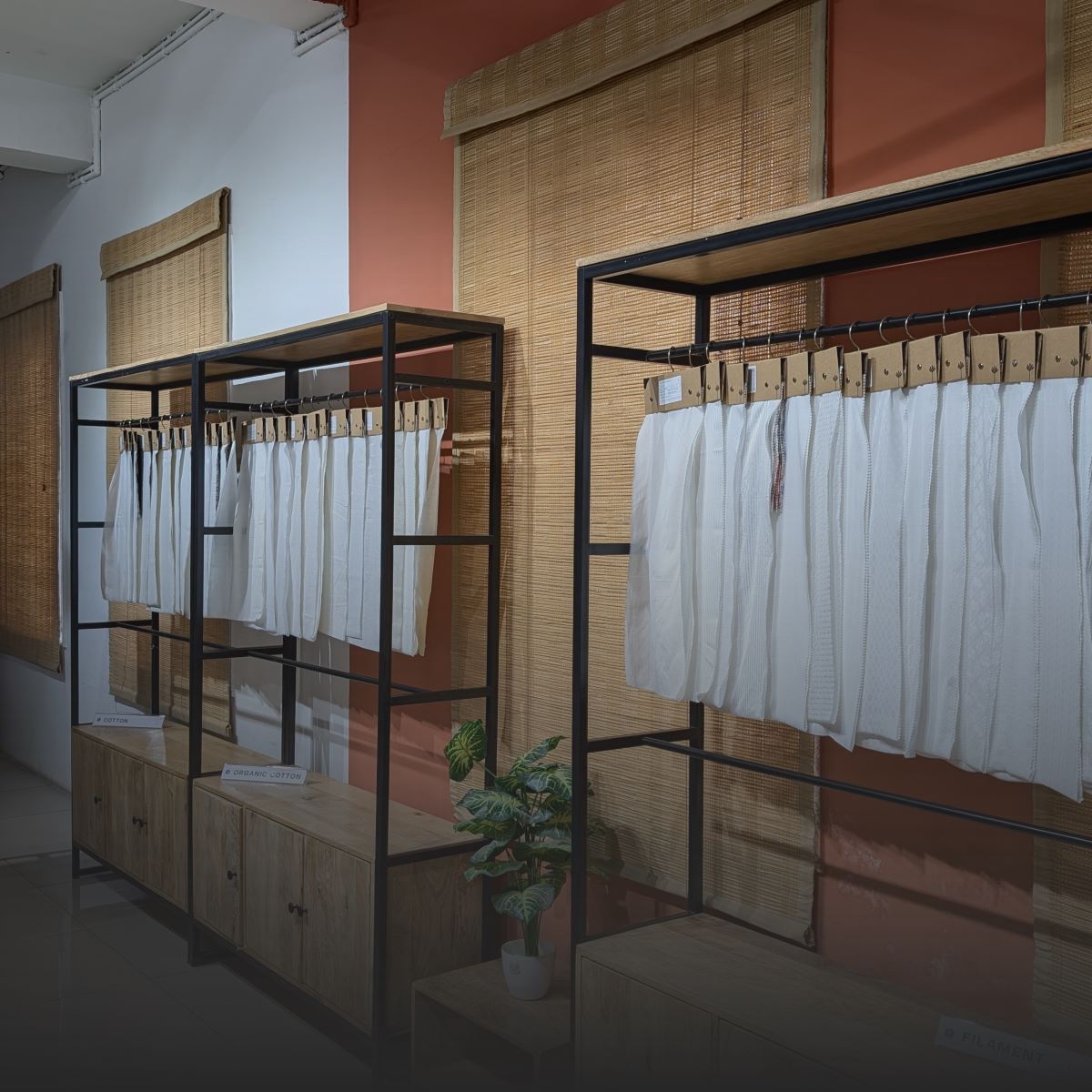Key Highlights
- The UK clothing market is increasing and is predicted to reach 79 billion GBP by 2029.
- Sustainability is a notable trend in the UK clothing business and numerous consumers pursue eco-friendly and ethical brands.
- Women's apparel is a positively profitable niche. In 2023, the UK imported 17.2 billion GBP worth of clothing.
- A well-written business plan increases your chances of success by 16%.
- Choose the proper legal structure (sole trader or limited company) based on your business needs.
- Set competitive prices while keeping market trends in mind, as clothing prices are expected to increase by 10.26% by 2029.
Introduction
Starting a clothing business in the UK in 2025 offers opportunities. The UK fashion market has been recovering despite inflation and rising energy and sourcing costs. In 2023, the market reached 64.5 billion British pounds, an increase of over eight billion pounds from the year before. The market is expected to keep growing, with projections estimating it will reach nearly 79 billion pounds by 2029.
Consumers are becoming more aware of sustainability and looking for brands that align with their values. This trend creates an excellent opportunity for new clothing businesses. Whether it's sustainable fashion, luxury clothing or streetwear, the market is full of potential.
In 2025, it is a great time to start a clothing business in the UK. However, success requires more than wonderful designs. You need to understand trends, legal requirements and sourcing. This guide will show you how to start and scale your business for growth in the UK.
Market Research and Identifying Your Niche

Conducting market research is essential before starting a clothing business in the UK. Understanding the UK fashion industry in 2025 and consumer preferences will give you the insights to choose the right niche for your brand.
Market research allows you to assess the demand, identify your target audience and analyze competitors. According to recent data, women's apparel generates significantly higher revenue than the men's and children's segments, with the UK seeing a value of 3.4 billion GBP in imports of women's or girl's garments. In contrast, men's or boy's garments exports from the UK totalled just 406 million GBP. This highlights the robust demand for women's fashion and indicates a profitable niche if you want to focus on women's clothing.
The UK clothing market is changing. In 2025, consumers will prefer styles that are both sustainable and trendy. Sustainable fashion is growing in popularity. This change happens as consumers learn more about environmental issues. This is a great niche to explore. Brands like Levi's, a top fashion name in the UK, make it even more appealing.
You should also consider the impact of regional sourcing. The leading regions of origin for UK clothing imports are Asia and Oceania, which present opportunities and challenges in cost, quality and ethical sourcing.
To find your niche, you need to match market trends. But you also have to offer something special. Target high-demand areas like luxury women's apparel, sustainable streetwear and innovative tech wear. The goal is to carve out a distinct space in the market while staying ahead of competitors.
You should also consider your pricing strategy. The average apparel price in the UK will rise by 1.7 GBP by 2029. So, it's important to include this in your pricing to remain competitive.
Read also: How to do market research and competitive analysis for your fashion business brand?
Developing a Business Plan

A business plan is a document that explains your company's purpose and how you plan to succeed. It serves as a guide for your clothing business in the UK, helping you stay focused on your goals and track your progress. Whether you're a small startup or a large company, a business plan is crucial. A Harvard Business Review study found that entrepreneurs who write business plans are 16% more likely to succeed than those who don't.
Your clothing business plan UK should include essential sections like your mission, target customers, marketing plan and financial forecast. This plan helps you stay organized and can also help you secure funding or attract investors.
A big part of your business plan is financial forecasting and budgeting. You'll need to know how much money you need to start and run your business and how much you expect to earn and spend. It's also essential to set both short-term and long-term goals. For example, your short-term goal might be to make your first sale within a few months, while your long-term goal could be to expand your product range or grow internationally.
You should review your pricing strategy as well. The average apparel price in the UK will likely increase by 1.7 GBP by 2029; consequently, include this in your pricing strategy to remain competitive and profitable.
Why You Need a Business Plan for Your Clothing Line
The clothing industry changes quickly. Fashion trends come and go and customers' tastes change over time. To stay ahead of the game, you need a clear business plan for your clothing line.
As your company grows, your business plan keeps you focused on your core mission and sales strategy. If competitors introduce new products, you should copy them. But by sticking to your business plan, you can decide if launching similar products fits your brand and goals.
A solid business plan helps you make better decisions and keeps you on track for long-term success.
Legal Structure and Business Registration
When starting a clothing business in the UK, one of your first decisions is choosing your business structure. This decision affects how you pay taxes, legal responsibilities and business operations. The two most common options are becoming a sole trader or a limited company. Depending on your goals, you can also consider other options like partnerships or social enterprises.
Sole Traders
A sole trader is the easiest and quickest way to start a business. You make all the decisions and keep all the profits after paying taxes. However, you are personally responsible for any business debts, which is called unlimited liability. Your assets could be at risk if the business runs into financial problems.
If your yearly revenue exceeds £1000, then register with HMRC for self-evaluation to become a sole trader. You do not need to register with Companies House. But you have to document your earnings and expenditures.
Limited Companies
A limited company is a separate legal entity from its owners. This means your assets are safe. You only owe the company's debts up to what you have invested. This keeps you safe, but it means more paperwork and legal steps. You will need to file annual accounts and pay Corporation Tax.
To set up a limited company, you must register with Companies House and follow the rules for choosing your business name. You must also pay Corporation Tax on your profits and file your accounts annually.
Sole Trader vs. Limited Company: Key Differences:
|
Aspect |
Sole Trader |
Limited Company |
|
Liability |
You're personally responsible for all debts. |
Your liability is limited to your investment in the company. |
|
Profits |
You keep all profits after tax. |
Directors must follow the rules for taking profits. |
|
Records |
Keep essential records for tax purposes. |
Must file accounts and tax returns annually. |
|
Income Tax |
Pay Income Tax through Self Assessment. |
Pay Income Tax depending on how you take money from the company. |
|
National Insurance |
Pay National Insurance based on earnings. |
Pay National Insurance based on salary from the company. |
|
VAT and Corporation Tax |
Only register for VAT if required. |
Must pay Corporation Tax and may need to register for VAT. |
Other Business Structures
There are also other options to consider, depending on your needs:
-
Partnership: If you start your business with a partner, you share responsibilities and profits.
-
Social Enterprise: This may be a good option if your business focuses on social or environmental causes.
-
Overseas Company: This might be suitable if you plan to operate internationally.
-
Unincorporated Association: A group working together for a shared purpose without forming a company.
Choosing the proper business structure will help your clothing business run smoothly and stay legally compliant in the UK.
Sourcing Suppliers and Manufacturers

Finding the right suppliers and manufacturers is a key step in starting a clothing business in the UK. The suppliers you choose will affect the quality, cost and delivery times of your products.
How to Find Reliable Clothing Suppliers
First, you must decide whether to find suppliers in the UK or overseas. Local suppliers can offer faster delivery times and easier communication, but international suppliers may offer better prices or unique materials.
In 2023, the UK imported around 17.2 billion GBP worth of clothing and accessories, with 5.3 billion GBP coming from the European Union. This shows how much the UK relies on imports for its clothing supply.
Ethical Sourcing and Sustainability in 2025
More and more consumers in the UK care about ethical sourcing and sustainability. Eco-friendly materials like organic cotton and recycled fabrics draw in customers. They care about sustainability. Make sure your suppliers follow fair labour practices to align with these values.
Fabriclore: Your Trusted Source for Eco-Friendly Fabrics
If you’re looking for custom fabrics and low MOQs (Minimum Order Quantities), Fabriclore is a great choice. They offer wholesale prices and work with businesses globally, making it easy to get the materials you need for your clothing line.
Why Choose Fabriclore:
Fabriclore is your ideal partner for clothing. They provide great prices, low MOQs and wholesale rates. They offer custom fabrics. You can choose designs and printing options that fit your brand. More than 400 fashion brands around the world trust Fabriclore. It guarantees on-time delivery and full transparency in fabric quality. This includes clear specs on the count, construction, weave and length. Fabriclore partners with you from concept to production. Their expert support and focus on sustainable fabrics are like having your own team. Their platform offers 100% authentic fabric at the lowest prices in the industry. This makes it a smart choice for any fashion business.
Domestic vs. Overseas Manufacturers: Pros and Cons
You can choose between domestic manufacturers in the UK or overseas manufacturers. Here's what to consider:
-
Domestic Manufacturers:
-
Pros: Shorter shipping times, easier quality management and support for local businesses.
-
Cons: Higher production costs, fewer material options and smaller production runs.
-
Pros: Shorter shipping times, easier quality management and support for local businesses.
-
Overseas Manufacturers:
-
-
Pros: Lower production costs, access to more materials and larger production runs.
-
Cons: Longer shipping times, higher shipping costs and potential language barriers.
-
Pros: Lower production costs, access to more materials and larger production runs.
The UK is also an exporter of clothing. In 2023, the UK exported 3.6 billion GBP worth of apparel, with over half going to EU countries. Women's or girls' knitted garments produced nearly 1.2 billion GBP in exports.
Branding Your Clothing Line:

|
Topic |
Description |
|
Unique Brand Identity |
Your brand is what makes your clothing different. What do you care about? Is it eco-friendly, affordable or high-quality? For example, Levi’s is known for its classic, high-quality clothes and in 2024, 75% of UK consumers had a positive view of Levi's. |
|
Mission and Values |
Your mission explains why your brand exists. What’s important to you? Do you want to use eco-friendly fabrics or make stylish clothes for everyone? Primark is popular with Generation Z in the UK because it offers trendy and affordable clothing, with 58% of UK Gen Z shoppers buying from Primark. |
|
Target Audience |
Know who your clothes are for. Are you selling to young people or older, fashionable customers? Understanding your audience helps you create a brand they like. For example, Primark is popular with younger shoppers, especially Generation Z. |
|
Brand Voice and Tone |
Your brand voice is how you talk to your customers. Do you want to sound fun or serious? For younger people, a fun, casual tone works. For a high-end line, a more formal tone might be better. Brands like Levi’s use a classic tone, while H&M uses a bold, modern voice to connect with younger shoppers. |
|
Visual Identity |
This includes your logo, colours and fonts. These should match your brand’s personality. For example, Levi’s uses clean, simple designs to show its timeless style, while H&M uses bold, modern designs to appeal to younger shoppers. |
|
Brand Story |
A good brand story explains why your brand exists and connects with people. Do you want to make fashion affordable or eco-friendly? Sharing your story helps build trust with your customers. Levi's tells its story through a focus on classic style and quality, while Primark focuses on being affordable for the younger generation. |
Designing Your Clothing Line

Designing your clothing line is where your ideas come to life. It's an exciting step in starting your clothing business in the UK, but planning carefully to create styles your customers will love is essential.
How to Design Your First Collection
Start by thinking about your brand and who you're designing for. What styles, colours and fabrics will appeal to your target audience? Stay aware of UK fashion trends in 2025, but add your unique touch. Use design software like Adobe Illustrator to create your ideas or hire a freelance designer if you need help bringing your vision to life.
Working with Designers or Freelancers
If you're not experienced in designing, consider working with a freelance designer. There are plenty of skilled fashion designers in the UK who can help you turn your ideas into actual designs.
Setting Up Online and Offline Sales Channels

Once you've designed your clothing line, the next step is to decide where to sell it. You must decide whether to sell online, in stores or both.
Creating an E-commerce Website
Setting up an e-commerce website is one of the easiest ways to sell clothing online. Platforms like Shopify, WooCommerce and BigCommerce make setting up your store, accepting payments and managing orders simple. Be sure your website is easy to use and works well on mobile devices, as many customers shop on their phones.
The fashion e-commerce market in the UK is growing fast. In 2021, fashion accounted for 31% of the total e-commerce market and online clothing sales reached a record 31% in 2020. Plus, over 10,000 fashion-related searches are made every minute in the UK, showing the interest in shopping for clothes online. 23% of all fashion sales now come from online shopping.
Selling on Marketplaces
You can also sell your clothing on eBay, Amazon, Etsy or ASOS Marketplace. These platforms already have many customers, which can help you reach more people quickly. Just remember that these platforms often charge fees, so make sure you understand their costs.
Retail Options: Pop-up Shops, Permanent Stores or Boutiques
Selling online is important, but physical stores also help to reach customers. In 2022, the UK had 11,799 clothing retail stores. This number has dropped a bit in recent years.
You can try a pop-up shop if you're not ready to open an entire store. You can test the market and connect with customers without a long-term commitment. Think about selling your clothes in local boutiques or stores. This can help get your brand noticed by more people.
For larger businesses, 95 clothing retail enterprises in the UK will have over 250 employees in 2024, showing that many companies will still thrive with physical stores.
Marketing and Social Media Strategy

Once your clothing line is ready to sell, you need a good marketing and social media strategy to promote and grow your brand.
Using Social Media Platforms
Social media is a great way to promote your clothing brand, especially in the UK. Instagram, TikTok and Facebook are the most popular platforms.
- Instagram is great for showing off your clothing with photos and videos.
- TikTok is ideal for reaching younger customers with short, fun videos.
- Facebook helps you reach a broad audience and build a community around your brand.
Influencer Marketing
Teaming up with influencers is a great way to reach more people. Find influencers that match your brand's style. They should also have followers who fit your target audience.
Read Also: How To Start A Clothing line
Key Elements for Success:
|
What to Do |
How to Do It |
|
Set Goals |
Make clear goals that are easy to measure and track. |
|
Know Your Audience |
Learn about your customers and what they like so you can create content for them. |
|
Plan Your Posts |
Use a mix of pictures, videos and fun posts to keep people interested. |
|
Talk to Your Followers |
Answer comments, join chats and build a strong group of followers. |
|
Use Ads |
Use paid ads to reach more people and target specific groups. |
|
Check Your Results |
Watch how your posts are doing and change things if needed. |
Platforms to Use
-
X (formerly Twitter): Useful for quick updates and conversations.
-
LinkedIn: Best for business marketing.
-
Pinterest: Great for sharing visual content and inspiring customers.
Using the right platforms and focusing on these key strategies can create a marketing plan that helps your brand grow.
Setting Up Logistics and Inventory Management

Once your clothing line is ready to sell, you need a logistics and inventory management plan. This will help you keep track of products, ship orders quickly and keep customers happy.
Choosing the Right Inventory Management System
An inventory management system helps you know what's in stock and when to reorder. Tools like Shopify, TradeGecko and Cin7 make it easy to track your products. Pick one that is simple to use and fits your business.
Shipping and Fulfillment Strategies
Decide how you will handle shipping:
|
Strategy |
Description |
|
Self-fulfillment |
You pack and ship the orders yourself. It gives you control but takes more time. |
|
Third-party fulfilment |
Services like Fulfillment by Amazon (FBA) handle packing and shipping for you. |
|
Dropshipping |
You only order products after receiving an order. It’s cheaper, but you have less control. |
Managing Stock Levels and Returns
Track stock levels to ensure you don't run out of popular items. Implement a returns policy to make it easy for customers to return items if needed.
Pricing Your Clothing Line
Choosing the right price for your clothing line is crucial. It helps you earn profits and draw in customers. You must balance your costs, market demand and competitors' charges.
How to Price Your Products for Profit
Start by adding up all your costs, like materials, production and shipping. Once you know how much each item costs, add a profit margin. A shared markup is around 50% to 100%, but it can change depending on your brand.
In the UK, the average price per item in the clothing market is expected to increase by £1.7 (or about 10%) each year from 2025 to 2029. By 2029, the average price per item is expected to reach £18.24.
Competitor Analysis and Positioning
Check what other brands are charging for similar products. If you're selling luxury items, your prices should be higher. On the other hand, if you're offering affordable clothing, keep prices lower. In 2023, UK households spent an average of £6.10 per week on women's outerwear and £3.50 per week on men's outerwear.
Discount Strategies and Seasonal Pricing
Offering discounts or running seasonal sales can attract customers. But be careful not to sell your products too cheaply. Try offering discounts during popular shopping periods, like Black Friday or Christmas. You can also offer deals like "buy two, get one free" to increase sales.
Read Also: Guide to Reducing Waste in Fabric Sourcing and Inventory Management
Hiring and Managing Staff

As your clothing business expands, you’ll need to hire staff to help manage various parts of it. Meeting legal requirements and creating a positive work environment are key. This helps attract and keep the right talent.
When and How to Hire Employees
You might not need staff at first. But as your business grows, you will need help with sales, customer service and marketing. Begin by hiring for important roles that support your business. Focus on positions like social media management and e-commerce operations.
Register as an Employer
Before hiring employees, you must register with HMRC if you plan to employ someone who earns more than £120 a week, receives a pension or gets benefits. After registering, you'll receive a PAYE reference number to handle payroll and manage tax and National Insurance contributions.
Pension Scheme
You must set up a workplace pension scheme if your employees are over 22 years old and earn at least £10,000 a year. You must contribute at least 3% of your qualifying earnings to the pension as an employer.
Enrol employees in the pension plan within six weeks of meeting eligibility.
Insurance Requirements
You are required by law to have Employer's Liability Insurance to cover the cost if an employee is injured or becomes ill because of work. Failure to have this insurance can result in fines of up to £2,500 per day.
Employment Contract
You must provide employees with a written employment contract. This should include details like job title, salary, working hours, holiday entitlement and pension details. This helps set clear expectations and protects both the employer and the employee.
Recruitment Process
-
Conduct Interviews: Assess a candidate's skills, experience and personality to ensure they're a good fit for your business.
-
Hiring Costs: You can hire employees through recruitment agencies (typically charging 15-20% of the salary) or through job boards, which may cost £100-£240 per listing.
Salary and Costs
- Make sure you pay at least the National Minimum Wage or National Living Wage, depending on the age of your employees.
- When you calculate employee expenses, also think about other costs. These include recruitment fees, pension contributions and insurance.
Legal Requirements
-
Eligibility to Work: You must ensure all employees are eligible to work in the UK.
-
Employee Rights: All employees are entitled to holiday pay, sick pay, work breaks and protection from discrimination under the Equality Act 2010.
Employee Retention
Hiring employees with potential and a strong career mindset is key. Employee retention can be a challenge, especially in retail, so creating a positive work environment is important to keep turnover low.
Managing Financials and Accounting:

|
Topic |
Description |
|
Managing Money |
|
|
Taxes |
|
|
Ways to Get Money |
|
Scaling Your Clothing Business:

|
Topic |
Description |
|
How to Grow Your Business |
|
|
Hiring More Staff |
|
|
Expanding Your Product Range |
|
Common Challenges in the Clothing Industry:

|
Challenge |
Description |
|
Supply Chain Issues |
Managing supply chains is tough. Suppliers might run out of stock, have shipping delays or send poor-quality products. Have backup plans and choose reliable suppliers. Stay in touch with them to keep things running smoothly. |
|
Trends and Market Demands |
Fashion changes quickly. What’s popular today may not be tomorrow. Keep an eye on social media and fashion influencers to spot new trends early. |
|
Managing Cash Flow and Inventory |
You need to track your money and stock. Make sure you spend wisely on products, marketing and staff while earning enough to cover costs. Use an inventory system to avoid running out or having too much stock. |
Key Takeaways
- Understand UK fashion trends in 2025 and choose the right niche for your clothing brand.
- Create a unique brand identity with a clear mission, target audience and visual style.
- Plan your goals, marketing and finances to guide your business. A solid plan increases your chances of success.
- Decide between being a sole trader or a limited company based on your needs.
- Choose reliable suppliers and manufacturers, considering cost, quality and ethics.
- Use both online sales channels like e-commerce websites and marketplaces and offline options like pop-up shops.
- Set competitive prices by considering costs, trends and competitors. Keep in mind future price increases in the market.
- Engage with customers on social media platforms like Instagram, TikTok and Facebook to grow your brand.
- Track finances carefully, including income, expenses, taxes and inventory management.
- Follow legal requirements, including registration with HMRC, insurance and employee rights.
Conclusion
In 2025, starting a clothing business in the UK is full of opportunities but also challenges. So, research, build a valuable brand and plan your sales strategy. Learning as you go is crucial whether you focus on online sales, retail or expanding your products.
To build a successful clothing brand, keep these key steps in mind: manage your finances precisely, stay informed about legal requirements and create a dependable team. Your business can succeed in the UK fashion market with the right plan, passion and hard work.
FAQ’s
How much does it cost to start a clothing brand in the UK?
Starting a clothing brand in the UK can cost between £1,000 to £10,000 or more, depending on factors like product design, materials and marketing. Larger businesses with physical stores or staff will require more investment.
Do I need a licence to sell clothes in the UK?
You don’t need a specific licence, but you must register your business with HMRC and possibly Companies House if you are a limited company. If your sales are over £85,000 a year, you’ll need to register for VAT.
How to start a clothing company in the UK?
- Do market research to understand trends and competition.
- Create a business plan with goals, strategy and finances.
- Find suppliers and manufacturers for fabrics and production.
- Design your brand with a unique identity.
- Set up an online store and consider selling on marketplaces.
- Register your business and follow tax regulations.
- Promote on social media to attract customers.
How much is the fashion industry worth in 2025?
The UK fashion industry is expected to reach around 79 billion GBP by 2029, with steady growth continuing through 2025, especially with the rise of sustainable fashion.
We also happen to be a magnet for suggestions, and would love to catch yours….throw us yours on hello@fabriclore.com




